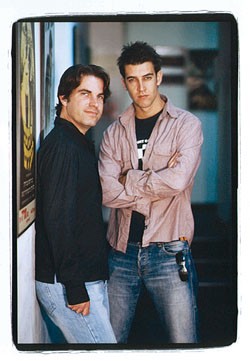
At the 2007 Sundance Film Festival—as it seems to happen every year—one movie started to emerge from the pre-fest hype and win over viewers. Usually, it comes from the American Competition categories (Napoleon Dynamite, Super Size Me), or from the Premieres (Little Miss Sunshine). But, while the 2007 buzz film was a low-budget effort from a first-time filmmaker, there was one way that it was not significantly like most other buzz films.
It wasn’t American.
John Carney’s Irish musical romance Once , which won the 2007 Audience Award in the World Cinema Dramatic Competition category, was acquired for distribution by Fox Searchlight and made a healthy $9.4 million at the U.S. box office. At a festival where, year after year, the lion’s share of the media attention lands on American independent cinema, in 2007 the Americans played second fiddle—or at least second guitar.
According to Sundance Film Festival programmer John Nein, it very easily might not have turned out that way, except for the festival’s aggressive attempts to build its World Cinema section. Over the past few years, the festival has increased the number of international documentaries programmed and made the World Cinema categories competition categories. Sundance programmers have had to be more proactive, Nein says, about getting out to other countries to find the best films available. Ireland hadn’t been a stop every year, but it was when Sundance found Once.
But even when Sundance has been able to find great international films, it hasn’t always been able to get them out into a tough American marketplace. “There was a great disinclination [by distributors] to take [Once] seriously,” Nein recalls. “It wasn’t what buyers wanted. It took everything within our power to point them in that direction.
“The lesson is, they had something in their head that told them that movie wouldn’t work [in the marketplace], and they were wrong. Every time they’re wrong, it’s exciting.”
You can’t blame distributors for not thinking Irish when they come to Sundance. Traditionally, the overwhelming share of Sundance attention has gone to the American competition slate and to the star power of the Premieres. The result, according to entertainment industry journalist and MovieCityNews.com editor David Poland, was to make Sundance a second-tier destination for the best international films.
“The world was not focused on sending their films to Sundance,” said Poland by phone from Los Angeles. “In the international business, it’s not a key stop. It was kind of an afterthought. … [Sundance] was a fairly weak international festival.
“But now, people are beginning to see Sundance as one of the three big places [along with the Cannes and Toronto film festivals] to launch a film. Until this year, they really haven’t had access to the best international films.”
John Nein also sees a shift in thinking, partly as a result of Sundance’s traditional focus on first-, second- or third-time filmmakers. “It’s not just a growing awareness of Sundance as a festival [for international film],” Nein says, “but a growing awareness of the conception of Sundance as a place for emerging talent.”
Poland already sees the result of this paradigm shift in the 2008 Sundance World Cinema slate. He describes the programmed international films this year as “a little bit edgier, a little bit less clear that they’re going to get domestic distribution. … I actually want to [see all the films in the World Cinema competition].”
And even some of the filmmakers in this year’s World Cinema competition are already seeing the result of this increased interest. In 2003, Israeli co-directors Guy Nattiv and Erez Tadmor sent their short film Strangers to Sundance. After the short won an award, they received funding to develop it into a full-length feature, which will be playing in competition this year.

As the world grows smaller in so many other respects, it may seem inevitable in hindsight that the independent-film world would grow smaller, too. Says Sundance senior programmer Caroline Libresco, “There’s been an internationalization of the entire film industry—a Swedish director with American financing, a huge influx of foreign directors represented by American agencies.”
Poland observes that as the world of “independent cinema” has changed, Sundance has wisely adapted. “The question we’ve been facing for the last five years, since the studios’ [boutique subdivisions] took over independent cinema,” Poland says, “is, ‘What is independent cinema?’ The expansion to the world is an answer to that question. … For Sundance to retain its relevance, they’ve had to move more towards world cinema than the other way around.”
The tricky part, however, continues to be getting film buyers and the media to pay attention to the World Cinema categories when there is so much else already on people’s agendas. “As you try to build up these new areas,” Poland says, “people still have to service the old areas. … It’s a big weight [Sundance has] taken on, and it’s fantastic that they have, but all they can do is offer it to us in the media and hope that we catch on.”
If we do, perhaps last year’s success won’t just have been a Once in a blue moon event.